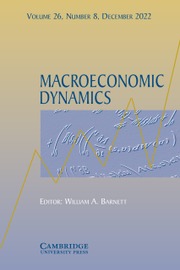No CrossRef data available.
Article contents
Investments, credit guarantees, and government subsidies in a regime-switching framework
Published online by Cambridge University Press: 12 November 2024
Abstract
This paper examines how credit guarantees and government subsidies impact investment in a regime-switching model. We provide new explicit pricing formulas for a general standard asset. Almost all common corporate securities’ prices can be easily derived by the explicit formulas though project cash flows are driven by both a Brownian motion and a two-state Markov chain. We provide a method about how governments should specify a proper tax subsidy standard for a given tax rate to motivate a firm to invest in a project in the way they wish. If the tax subsidy is sufficiently high (low), an overinvestment (underinvestment) occurs. The higher the tax rate, the more significant the overinvestment (underinvestment). We pin down the subsidy amount required for motivating a firm to invest immediately and fix the optimal capital structure with government subsidies.
Keywords
- Type
- Articles
- Information
- Copyright
- © The Author(s), 2024. Published by Cambridge University Press
Footnotes
We thank the editor and an anonymous referee for their patience and helpful comments. The research reported in this paper was supported by the National Natural Science Foundation of China (Project Nos. 72031003 and 72432005). The major work of the paper was finished while Xiang Liu was a Ph.D student at the Southern University of Science and Technology.


